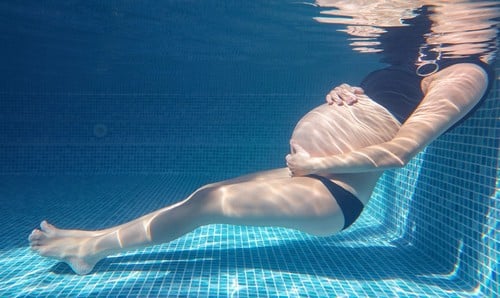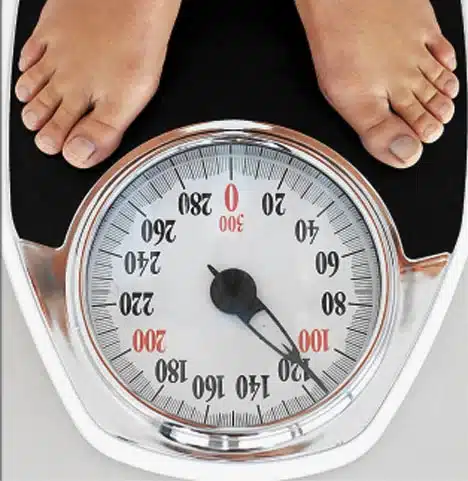Factsheet – Aquanatal Exercise Classes
Written by Keri Alldritt
Midwife, UK
Instagram @midwife_keri
Summary
This fact sheet provides a summary of exercising in water when pregnant.
The Class
Most women know about the benefits of exercise during pregnancy; however, their confidence to exercise is sometimes reduced.
Exercising in water is safe and fun and has numerous added health benefits.
I started teaching aquanatal after I qualified as a midwife; I wanted to combine my love for fitness with my passion for midwifery.
Each class starts with a get-together by the poolside where the “regulars” will chat, whilst I will instantly recognise any new faces. I’d introduce myself, have a general chat and ask them to complete a screening questionnaire so that I know whether to adapt any of the exercises for them.
During Aquanatal, there is a warm-up; I will go around the class and ask everyone to say their name, how many weeks pregnant they are (roughly!), and each week, I’d ask a different question… some weeks, it’s a pregnancy-related question “Name something that you have been craving” other weeks it’s “what’s your favourite pizza topping!”
I found that this introduction opened up conversation and space to educate without the women feeling that it was an antenatal class. Often it would spark other questions, which led to some brilliant discussions (in which they were doing a cross-country ski in the water!)
The Benefits
- Control weight gain and improve fitness
- Reduce blood pressure
- Prevent gestational diabetes
- Improve sleep
- Improve mental health and mood1
Numerous studies, high on the hierarchy of evidence, have evidenced the benefits of exercise in water. One randomised controlled trial found that physical activity in water enhanced pregnant women’s health-related quality of life (or HRQol) when they undertook it in pregnancy2 . A recent meta-analysis found that exercise in water prevented excessive weight gain, improved body image, promoted healthier behaviour as a whole and decreased medical leave due to lower back pain3. This demonstrates the benefits of exercise in water in pregnancy alone- but what about labour benefits?
A randomised controlled trial found no difference in the use of epidural analgesia in those who exercised in water compared to those who did not; however, those who exercised in the water reported significantly less pain in labour as a whole4.
From my experience talking to women, women with SPD found the class beneficial. Once in the water, you become buoyant, meaning the weight and gravity are reduced from your pelvis, meaning some relief of symptoms of SPD.
An additional benefit and I would argue one the most important, is that women can meet with a midwife outside of a clinical setting. This is invaluable and provides a space to discuss topics which maybe wouldn’t have otherwise been explored.
My Experience as a Midwife teaching Aquanatal Classes
I’m really proud that the women who have attended my class have made friends for life; some have been bridesmaids at each other’s weddings. Meeting other pregnant women’s social impact and mental health benefits are immense. Being a mother, I know how important it is to have a good peer support network around you. This is something that can’t be measured in any research as a numerical value.
Teaching aquanatal is my favourite part of midwifery; it’s back to basics, talking to women and providing support without a time constraint of an appointment. It provides continuity-of-carer; most women would see me once a week, more often than their named midwife! I believe more midwives should attend an aquanatal course as it is a great way to interact with the women you care for.
It wasn’t rare that I would work in the birth centre as part of my role as a community midwife and look after one of the women who attended aquanatal; it would always be the best feeling knowing so much about her (even what her favourite pizza topping was!!!)
References
- Department of Health. (2017) Physical activity advice for expectant mothers – Chief Medical Officer. [online] Available at: <https://www.health-ni.gov.uk/news/physical-activity-advice-expectant-mothers-chief-medical-officer> [Accessed 25 September 2022].
- Rodríguez-Blanque, R., Aguilar-Cordero, M., Marín-Jiménez, A., Menor-Rodríguez, M., Montiel-Troya, M. and Sánchez-García, J., (2020). Water Exercise and Quality of Life in Pregnancy: A Randomised Clinical Trial. International Journal of Environmental Research and Public Health, 17(4), p.1288.
- Cancela-Carral, J., Blanco, B. and López-Rodríguez, A., (2022). Therapeutic Aquatic Exercise in Pregnancy: A Systematic Review and Meta-Analysis. Journal of Clinical Medicine, 11(3), p.501.
- Carrascosa, M., Navas, A., Artigues, C., Ortas, S., Portells, E., Soler, A., Bennasar-Veny, M. and Leiva, A., (2021). Effect of aerobic water exercise during pregnancy on epidural use and pain: A multi-centre, randomised, controlled trial. Midwifery, 103, p.103105.











